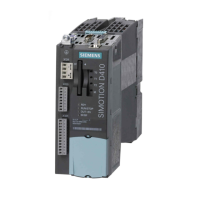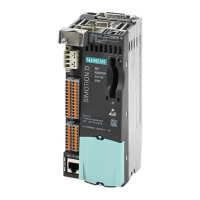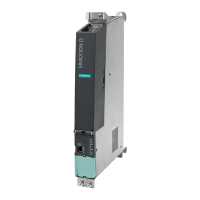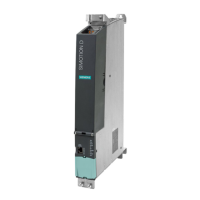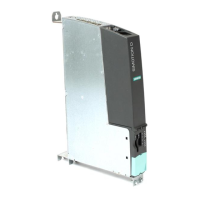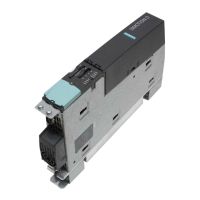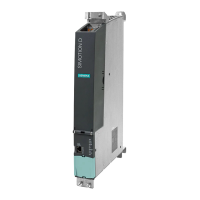Input delay, typ. (hardware):
●
DI/DO 9-11:
(can also be used as measuring input inputs)
● DI/DO 8
● 0 → 1 signal: 5 µs
● 1 → 0 signal: 50 µs
● 0 → 1 signal: 50 µs
● 1 → 0 signal: 100 µs
Measuring input input, reproducibility 5 μs
Table 7-14 Digital inputs/outputs when used as output
Rated load voltage 24 V DC
Permissible range 20.4 … 28.8 V
Electrical isolation no
Current load, max. 500 mA per output
Residual current, max. 2 mA
Output delay, typ./max. (hardware)
1)
● 0 → 1 signal: 150 µs / 400 µs
●
1 → 0 signal: 75 µs / 100 µs
Output cam output, reproducibility, typ.
2)
● 200 μs with 3 ms bus/servo cycle clock
●
300 μs with 6 ms bus/servo cycle clock
Short-circuit protection yes
Total current of the outputs Maximum permitted total current at X121 each
1
A over the total operating temperature range
(equals 50 % coincidence)
Extinguishing energy per output 400 mJ
Lamp load 1 A for 50 ms
Maximum lamp load 5 W
Switching frequency
●
With resistive load, max.
● With inductive load, max.
● With lamp load, max.
● 100 Hz
● 0.5 Hz
● 10 Hz
1)
Data for: V
cc
= 24 V; load 48 Ω; high ("1") = 90% V
out
; low ("0") = 10% V
out
2)
Reproducibility is cycle dependent. Short cycle times must be used for good reproducibility
7.6 Clock
Features of real-time clock
The table below contains the features and functions of the Control Unit clock.
Table 7-15 Clock features
Features Description
Type Hardware clock (integrated "real-time clock")
Default setting when delivered DT#1992-01-01-00:00:00
Technical data
7.6 Clock
SIMOTION D410
Manual, 04/2014 91

